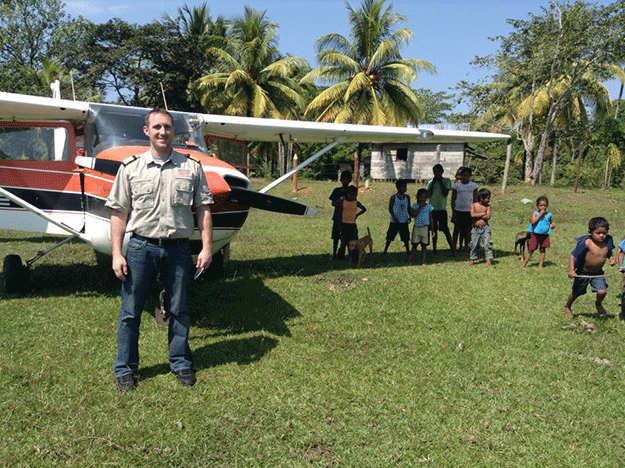On Feb. 6, TJ Stewart took over as field director for Wings of Hope in Nicaragua. For the past 18 months, TJ had been working as a mechanic in the hangar at our St. Louis headquarters. Everybody here loved having TJ around, but we all knew it was only a matter of time until he returned to his true love: flying humanitarian missions overseas.
TJ’s main responsibility in Nicaragua is flying and maintaining a Cessna 172 to support medical air evacuations. But he views his role in much broader terms:
“Although being the pilot is my main responsibility, it will not be the only thing that I will be doing. In my few years of doing this work, I have learned that a humanitarian’s job description is ‘finding and meeting the needs of the people you are serving and living with.’ So whether it is flying a patient to receive proper medical care, organizing solar energy projects, or starting sustainable food projects – if it’s a need, and it can be met, I feel that it is my responsibility to do it.”
“After seeing the conditions of most of the roads over here, it’s very easy for me to believe when I hear that a 15-minute flight can take up to 8 hours or more by either road or boat. Especially when you are working with the most critical kind of patients, minutes can be the difference between life and death. Of all the people flown, 80% percent of them would not have survived the trip if not by air.
“In sleepy little villages spread out over the desolate northeastern portion of Nicaragua, where the only form of transportation is these roads, or down the windy Rio Coco River, the airplane is their beacon of hope.”

